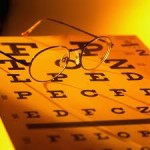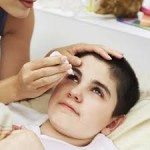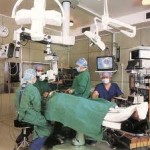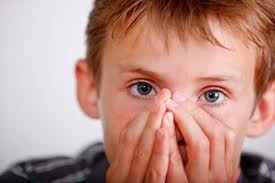Lazy eye or also known as amblyopia is a decrease in visual perception that may result unusual visual development during the stage of infancy and early childhood. Lazy eye normally affects only one eye, however it may also affect both eyes. There is no evident irregularity or damage to the eye in lazy eye disorder. If lazy eye is left untreated, it may lead to the loss of vision that may vary from mild to severe. Among children, lazy eye is the primary cause of reduced vision.
Lazy eye occurs when the nerve pathways between the brain and the eye are not stimulated in a right way. This usually results to a condition wherein the brain will favor only one eye, frequently due to reduced vision in the other eye. The weaker eye has a tendency to wander. In the long run, the brain may pay no attention to the signals that being received from the weaker or lazy eye.
There is traditional lazy eye treatment that can frequently correct lazy eye like wearing a corrective eye wear or eye patches. Surgical treatment may also apply if needed.
What are the signs and symptoms of lazy eye?
Signs and symptoms of lazy eye may include the following.
- An eye that wanders outward or inward
- Eyes that may not come out working together
- Reduced depth perception
It is still possible that lazy eye affects the both eyes even though it normally affects just one eye. It is important for the child to have a vision checkup especially if there is a family history of crossed eyes, childhood cataracts or other eye conditions. It is normally recommended to undergo a complete eye exam for children between the ages of 3 and 5. If you observe your child’s eye wandering at any instance beyond the first few weeks of birth, do not hesitate to consult your child’s doctor for proper evaluation.
What are the causes of lazy eye?
Blurred vision of a child or crossed eyes may cause lazy eye and some of the more frequent causes are the following.
- The most frequent cause of lazy eye is the imbalance of the muscles which is responsible for location of the eyes or also known as strabismus. This muscle imbalance can be the reason for the eyes to cross in or turn out. This may also put off the eyes from tracking in a synchronized way with each other.
- An irregular central retina or the presence of cloudy part in the lens of the eye is some of the eye abnormalities that may lead to lazy eye. In some cases, the abnormal shape of the eye or the differences in sizes between the eyes may also contribute to lazy eye.
- In rare cases, the first sign of eye tumor that may appear is a wandering eye.
What is the lazy eye treatment?
Lazy eye treatment should preferably starts in early stage of childhood wherein the difficult connections among the eye and the brain are forming. Lazy eye treatment may depend on what causing and how much the vision of the child are being affected. Lazy eye treatment may include the following.
1.    Make use of a corrective eyewear.
 Eye conditions like farsightedness, nearsightedness or astigmatism that may contribute to lazy eye, corrective eyeglasses or contact lenses will possibly be recommended. Using of corrective eyewear is at times is all that is required.
Eye conditions like farsightedness, nearsightedness or astigmatism that may contribute to lazy eye, corrective eyeglasses or contact lenses will possibly be recommended. Using of corrective eyewear is at times is all that is required.
2.    Wearing eye patches.
 Your child’s doctor may recommend the use of eye patches. Child affected with lazy eye may put on an eye patch over the stronger eye probably for two or more hours in a day depending on the intensity of the lazy eye. This may help the area of the brain that controls the eye vision to develop more fully.
Your child’s doctor may recommend the use of eye patches. Child affected with lazy eye may put on an eye patch over the stronger eye probably for two or more hours in a day depending on the intensity of the lazy eye. This may help the area of the brain that controls the eye vision to develop more fully.
3.    Make use of eye drops.
 An everyday drop or twice in a week drop of atropine may temporarily blur the vision of the stronger eye. This may boost the use of the weaker eye and may also be an option from wearing an eye patch.
An everyday drop or twice in a week drop of atropine may temporarily blur the vision of the stronger eye. This may boost the use of the weaker eye and may also be an option from wearing an eye patch.
4.    Undergo surgical procedure.
 Your child’s doctor may recommend a surgical treatment if your child has crossed or outwardly opposing eyes. Cataracts or droopy eyelids may also have to undergo surgical procedure.
Your child’s doctor may recommend a surgical treatment if your child has crossed or outwardly opposing eyes. Cataracts or droopy eyelids may also have to undergo surgical procedure.
Early application of proper lazy eye treatment will greatly improves the vision within weeks to a number of months. The outcome of the lazy eye treatment will be better if it will begin in the early stage of childhood. So, it is advisable to let your child to undergo an eye check-up particularly if lazy eye tends to run in the family.
